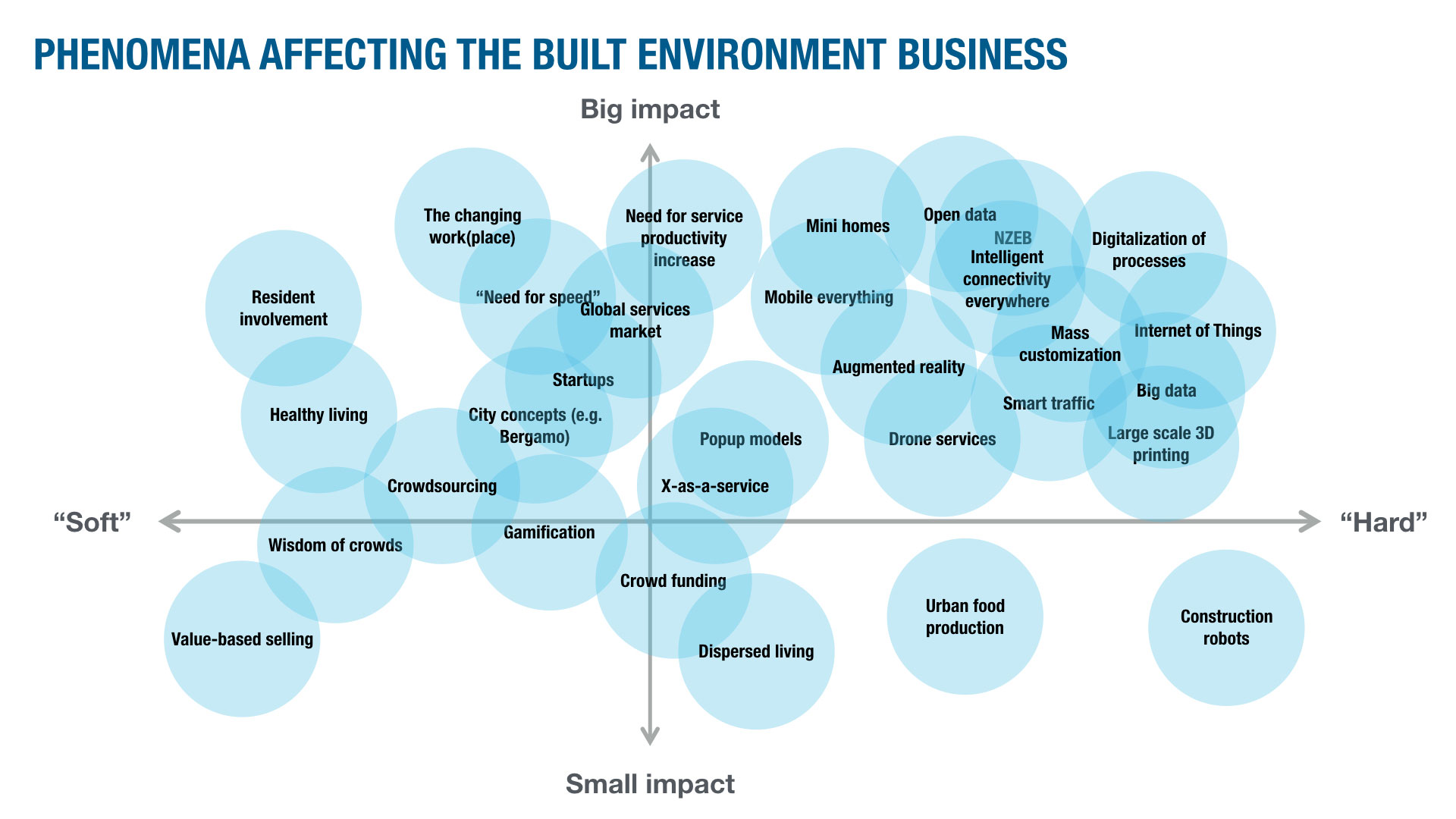RYM, the Finnish innovation center for built environment, commissioned my company to identify changes in the customers’ world and discover business opportunities that arise from the changing business environment.
I asked Janne Saarikko, a marketing strategist and expert on future living, to help with the research. We scoured relevant Internet sites and social media outlets and interviewed experts to form a picture of the trends, signals and technologies that would have an impact the industry. Furthermore, we used our joint expertise to make the final conclusions.
The phenomena
We devised a “phenomena chart”, a presentation that summarizes our findings. It has two axes: impact and quality. For each item, we evaluated if its potential impact on the business –big or small– and its quality –soft or hard. Soft in this case means human-derived, social, behavioral and value-based. Hard is technology-driven, data and information related. Below is one iteration of our chart.
Solutions
We used the phenomena chart, backed with empirical data, to identify change themes. From the phenomena and themes we were able to present eight solution ideas – the solution landscape – to build on.
Growth opportunities
How can companies use our findings? There are four basic strategies for growth: improvement, innovation, extensions, and strategic acquisitions. For example, if a company is active in residential construction, they could pick up “new living solutions”, “everything as a service”, and “user as a designer”. They could then ideate alternative ways to turn our findings into one of the four growth strategies.
Below is an exemplary growth matrix that demonstrates the method using five development themes.
What next?
Our study was intended to be more inspirational than scientific. We wanted to show that there are plenty of opportunities to create new value in the built environment.
We encourage companies to do experiments, especially in cross-industry teams. Experimentation is the quickest way to learn. Learning how to learn is an essential skill for the 21st century.
View the original article and our Inspiration here





Leave a Reply